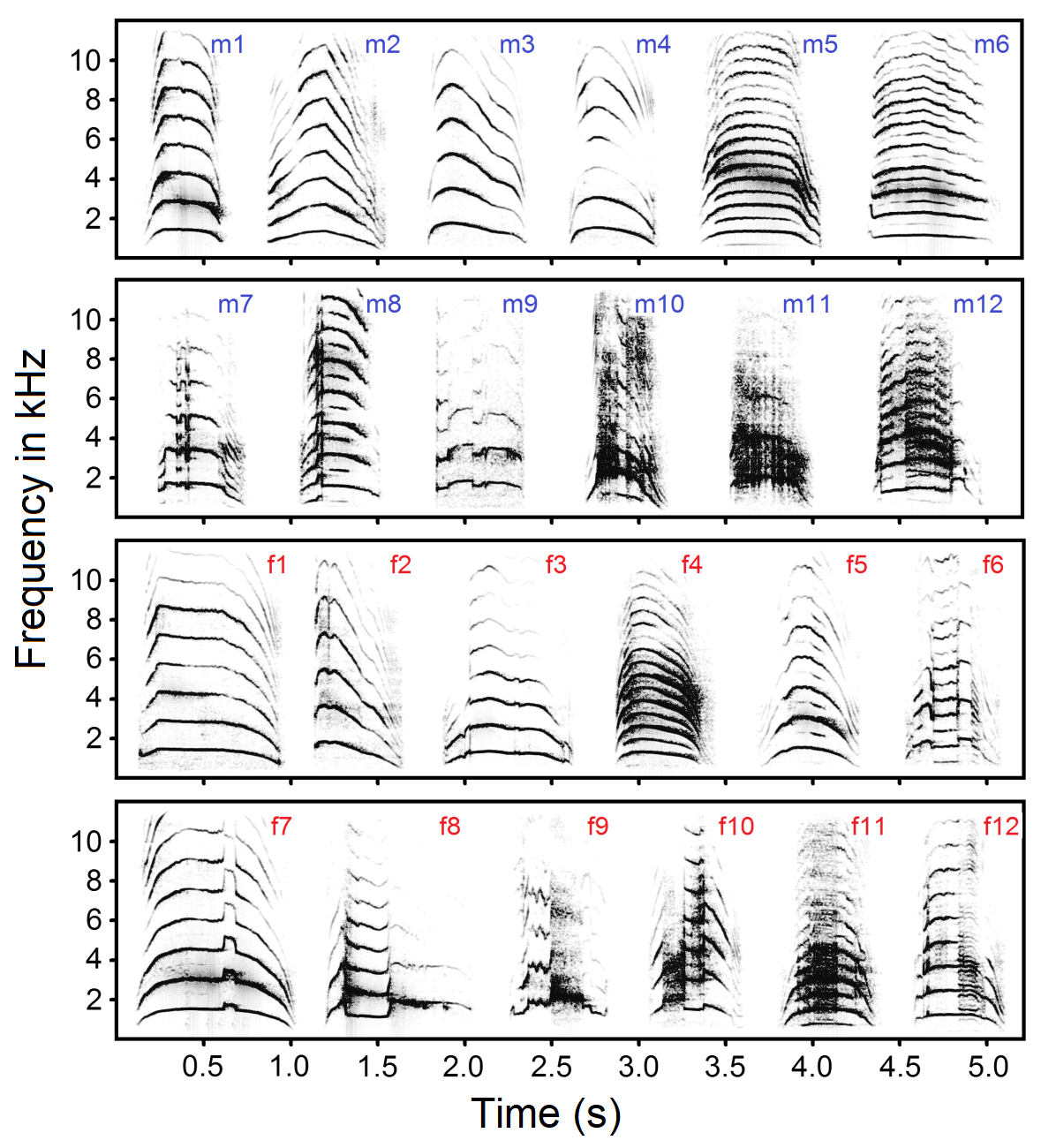
This study tested the hypotheses that the discomfort calls of 2-week-old domestic cat kittens vary between individuals, contain sex cues, and may provide information to the mother about the physical health and potential of a given kitten to survive until the end of nursing. Body weight was also assessed as an indicator of the kittens' body condition. Since body weight depends on the size of the brood, the number of cubs in the brood was also taken into account. Additionally, since kittens' immunity may have been higher as a result of multiple paternity, this proxy for physical health was also considered in the study.
The study was based on the idea that if it is not possible to raise an entire large litter, a mother cat could potentially redistribute resources in the form of milk, licking and warmth in favor of those kittens that have a higher chance of survival at the expense of those kittens that are weakened from diseases or physiological defects. We expected to find a relationship between the acoustic parameters of kitten calls and their subsequent survival to cessation of milk feeding, which could provide the mother with an honest indicator of the quality of the kitten's health and vitality.
The cries of 57 two-week-old kittens were recorded during the blood collection procedure at the Chernogolovka Scientific Experimental Base. Of these, 53 kittens meowed, and 4 were silent. Of the 57 kittens, 47 survived to 90 days of age. However, the calls of kittens that survived and did not survive to 90 days of age did not differ in any acoustic parameter. Thus, the acoustic signs of sounds do not allow the mother to treat the kittens selectively, redistributing resources in favor of the stronger ones.
Analysis of physical and acoustic parameters showed that the kitten's large body mass was the most important factor in its further survival and correlated with almost all acoustic parameters of calls. Litter size influenced body weight, with weight being highest in litters of 4 kittens, intermediate in litters of 5 kittens, and lowest in litters of 6–8 kittens. The presence of multiple paternity in the litter and the sex of the kitten did not affect body weight. Survival to 90 days was dependent on body weight. Body weight was lowest in kittens that did not survive to this age.

How can weaker kittens mask their low chances of survival by crying? Low-weight kittens increased their chances of survival by making calls that attracted increased attention from their mother. We found that the lower the kitten's body weight, the more frequent the calls, the longer the calls, the higher the energy quartiles, and the more calls contained nonlinear vocal phenomena. As has been shown previously for many mammalian species, such calls have increased attractiveness to adult caregivers of their young, and adults are less likely to ignore them.

It was impossible to determine the sex of the kittens by their calls, and their identity could be determined with rather low accuracy. Interestingly, in another study, very clear differences between males and females were found in the meows of adult domestic cats at the Chernogolovka Scientific Experimental Base, while individuality was also low (Sedova et al., 2023, press release https://sev-in.ru/node/3323).
The results of the study were published in the journal Behavioral Processes:
Rutovskaya M.V., Volodin I.A., Naidenko S.V., Erofeeva M.N., Alekseeva G.S., Zhuravleva P.S., Volobueva K.A., Kim M.D., Volodina E.V., 2024. Relationship between acoustic traits of protesting cries of domestic kittens (Felis catus) and their individual chances for survival. Behavioural Processes, v. 216, 105009, https://doi.org/10.1016/j.beproc.2024.105009
